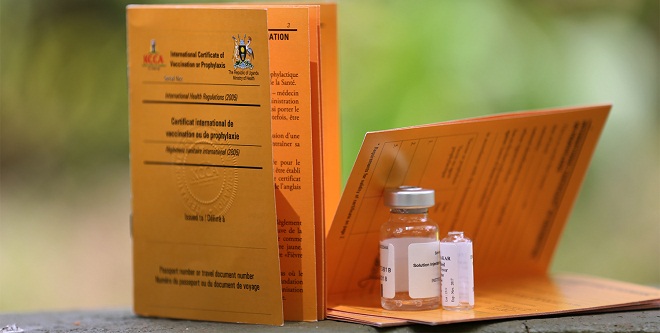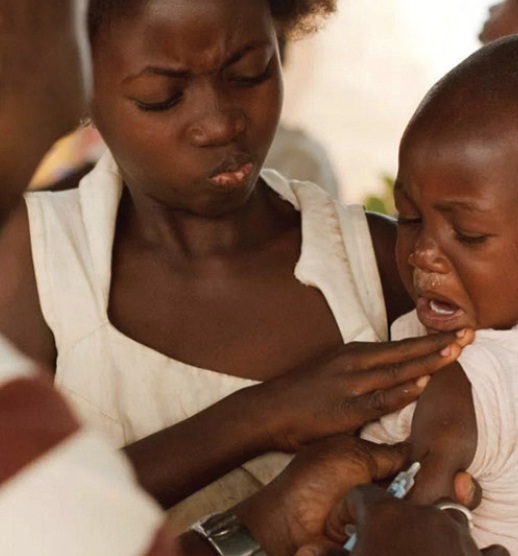
Nobody should be dying of yellow fever because the disease has an extremely effective vaccine. Experts say a single dose of the medicine which has been available for over 70 years can provide 99% protection from the mosquito borne viral infection. But, by May 09, seven people had been confirmed dead in the Southern Uganda district of Masaka. Forty nine other suspected cases had been reported from different districts including Ntungamo, Bukomansimbi, Kalungu, Rukungiri, Lyantonde and Rakai and are still under review at the Uganda Virus Research Institute.
This outbreak renewed the need for people; especially those traveling outside Uganda to be vaccinated against the disease as per the travel advisory issued by the Ministry of Internal Affairs. But, some people requiring the shot have been left in suspense over whether they should pay for the vaccine or not. It all started with mixed messages coming from two government institutions.
While the National Medical Stores (NMS) announced that the vaccines are free, workers at Kampala City Council Authority (KCCA) medical facility continued charging Shs100, 000 per dose of the vaccine and an additional Shs6000 for the certificate. That charge is quite high. It is about 30% of the monthly salary of a primary school teacher.
KCCA, NMS officials point fingers at each other amidst global vaccine shortage
According to Dr. Moses Kamabare, the NMS General Manager, KCCA should not be selling these vaccines because on April 27 the stores provided them with 3000 doses of yellow fever vaccines free of cost. Kamabare told The Independent that when KCCA’s Executive Director Jennifer Musisi wrote to him explaining the emergency, they had to avail them the drugs even though they had not planned for such a supply.
“They requisitioned this batch through their budget which is under the government of Uganda and every drug under this arrangement is supposed to be free,” he said.
When this was put to KCCA’s Director of Public health and Environment, Dr. David Serukka, he acknowledged receiving the free vaccines. He, however, said KCCA has already charged a fee for the vaccine and the authority did not want to scrap the fee for fear of being inconsistent. “We ordered for more vaccines from NMS because we got a stock out and there was urgent need. We decided to continue with the charge of 100,000 as we wait for deliveries from Laborex (Private vaccine supplier),” he said.

The mixed messages from the two government entities attracted intervention by the Ministry of Health and KCCA was ordered to pay for the doses they acquired from NMS. The Minister of State for Primary Healthcare, Sarah Opendi, told journalists on May 05 that the government will in future start yellow fever vaccination for all just as it does for BCG, PCV, DPT that are given out at no cost to public health facilities.
Much as the news is exciting, Dr. Robert Balikuddembe a researcher and pharmacologist, says it may be hard for the government to fulfill its pledge. He said yellow fever vaccines are expensive and tasking to produce. He said, globally, the vaccine is produced by only four manufacturers mainly because production is cumbersome that it has not attracted many companies to start production.
“To produce this vaccine, one needs pathogen free eggs with embryos of about a week old. These are infected with the virus and then allowed to incubate for three or four days. Then you harvest them under very hygienic conditions and of course other chemical processes follow,” he says adding that what makes it even more complicated is that you do not use just any eggs. He said the eggs are from specific chicken which are very hard to get in large numbers. This makes it hard to ensure continuous supply of large quantities of vaccines.
Globally, around 80 million doses of yellow fever vaccine are produced each year with most of these going to Latin America and Africa where the viral infection is endemic. Earlier this year, following an outbreak in Angola which has so far claimed more than a hundred people, about 10 million doses of the vaccine were diverted to the country. International media reports show that this has created a global shortage in vaccines and some countries that do routine childhood immunization have had to suspend their programmes due to lack of medicines.
Also, a report released by UNICEF last year indicated that the forecasted demand for the yellow fever vaccine for preventive campaigns exceeds current availability by 42%. According to the report, the limited global production capacity can hardly meet the demand as many countries have embarked on routine immunisation programmes as per recommendation by the World Health Organization (WHO).
Though the country is situated in the so-called Yellow Fever belt of Africa, Uganda has never done country wide yellow fever vaccination. The only time the country did some mass vaccination was in 2012 after an outbreak in Northern Uganda. The Ministry of Health has announced that they have acquired vaccines worth Shs2.1 billion from Gavi for mass vaccination in districts of Masaka, Rukungiri and Kalangala. These vaccines however will only cater for 643765 people.
Whoever needs the vaccine currently has to choose from four health facilities all found in the city; that is KCCA clinic, the Surgery clinic in Naguru, Norvik hospital and Kizuri Entebbe airport clinic in the urban district of Entebbe. All charge a fee for the vaccines. As a result, it is alleged, some individuals have resorted to using unscrupulous means to get the yellow fever vaccination certificate without being vaccinated for travel purposes. This poses another danger of spreading the disease widely yet it has no cure. People who get the disease receive treatment just to manage symptoms as the disease has no definite drugs.
Doctors say with yellow fever, one will get mild symptoms such as fever and headache and will recover after three to four days. But after a brief reduction for hours or a day, many will develop a more severe form of the disease characterized by abdominal pains, high fever, bleeding through nose, eyes or mouth, jaundice and nausea which deteriorate into liver and kidney malfunction causing death. WHO figures show that the disease infects about 200,000 people per year of which 30,000 succumb.
 The Independent Uganda: You get the Truth we Pay the Price
The Independent Uganda: You get the Truth we Pay the Price



